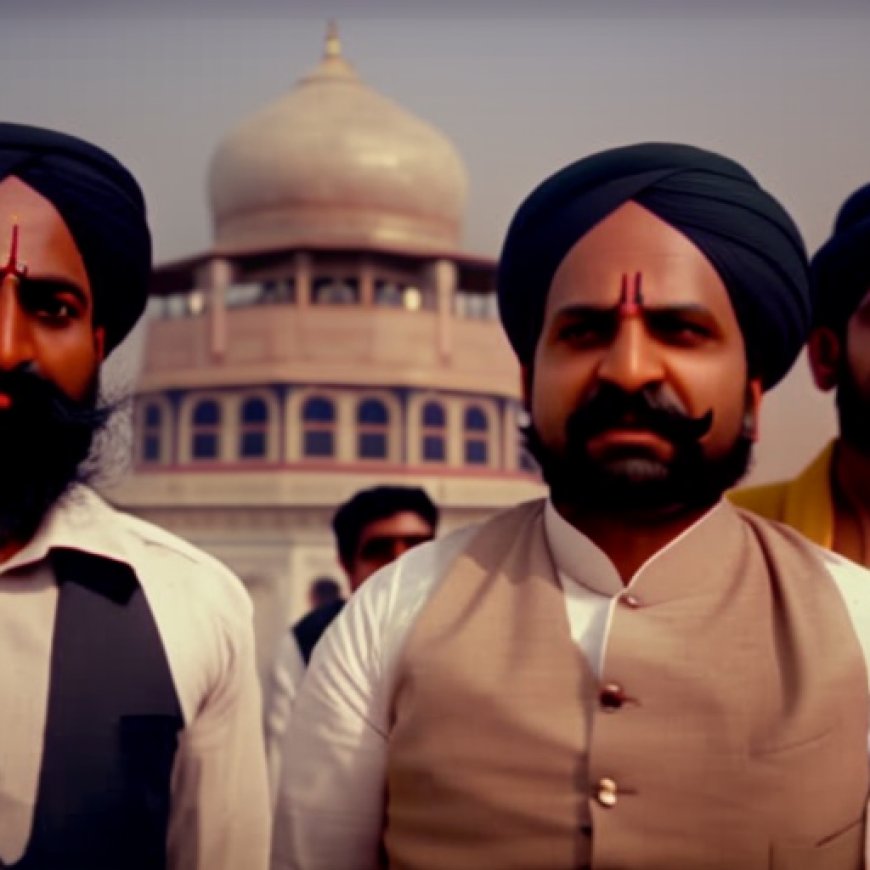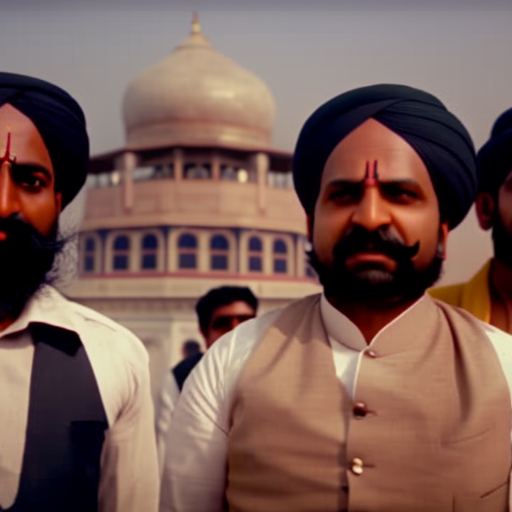Politics hampers Delhi’s fight against air pollution
Politics hampers Delhi's fight against air pollution The Economist


Delhi’s Air Pollution: A Threat to Sustainable Development Goals

Introduction
DURING THE last week of October, Delhi’s air quality began its seasonal shift from unpleasantly foul to sickeningly filthy. As temperatures dropped and clouds heavy with brown particulate matter drifted in from neighbouring states, the official rating of air quality in India’s capital went from “poor” to “very poor” and then “severe” in places. This means that Delhi’s air, the most polluted of any big city, is now hazardous to breathe even for healthy people. It is likely to remain so for much of the next three months.
The Impact of Air Pollution on Sustainable Development
Air pollution in South Asia is estimated to claim over 2m lives a year. Partly caused by agricultural practices, including stubble burning, it is most severe in northern India, especially in winter, when cold air traps pollutants in the mostly windless Indo-Gangetic Plain bordered by the Himalayas. A recent study suggests that the average resident of Delhi loses up to 12 years of life to air pollution. According to official figures, in 2022 Delhi’s air was considered “good” or “satisfactory” on only 68 days. The average concentration of particularly harmful PM 2.5 particles—which can enter the bloodstream and cause heart disease and respiratory problems—was 98 micrograms per cubic metre. That is nearly 20 times the level considered safe by the World Health Organisation.
Political Obstacles to Mitigating Air Pollution
As sources of air pollution are often far from the worst-affected places, it can only be significantly mitigated by different authorities acting in concert. Yet partisan rivalry often gets in the way—as is illustrated by the latest row between Delhi’s government, which is run by the Aam Aadmi Party (AAP), and the central government of Narendra Modi’s Bharatiya Janata Party (BJP).
The argument pits Delhi’s environment ministry against the city’s pollution control committee, which is headed by a bureaucrat on secondment from the national home ministry. In late October the capital’s environment minister claimed this official had unjustifiably withheld funding from a years-long study to measure the source of pollutants in Delhi’s air. The pollution control committee claimed to have identified methodological flaws in the study which, it said, were designed to absolve the AAP government of blame for the problem. The city administration, in turn, claimed the scuppering of the study was part of a pattern of government officials loyal to the BJP deliberately undermining the AAP’s work. Whoever is right, the study is unlikely to be resumed—a serious setback for pollution mitigation in the world’s filthiest city.
The Broader Fight for Control
The row is part of a broader fight between the AAP and centre over control of Delhi’s entire bureaucracy. In August the central government passed a law in effect awarding control to itself. This superseded a Supreme Court verdict on the issue in the AAP’s favour. A constitutional challenge by the AAP government is pending.
The Need for Collaboration and Coordinated Efforts
The row is threatening a rare hopeful anti-pollution effort. A regional anti-pollution body, encompassing Delhi, its neighbouring states and several central-government ministries, was recently launched to co-ordinate smog mitigation policies. The fact that the AAP also governs Punjab, where much of the stubble-burning happens, made that seem all the more promising. Yet the body will not achieve much so long as the central and Delhi governments prize partisan advantage over making Delhi’s air safe to breathe.
Addressing air pollution in Delhi is crucial for achieving the Sustainable Development Goals (SDGs), particularly Goal 3: Good Health and Well-being, Goal 11: Sustainable Cities and Communities, and Goal 13: Climate Action. It requires collaboration, evidence-based research, and effective policies that prioritize public health and environmental sustainability.
Source: The Economist
SDGs, Targets, and Indicators
| SDGs | Targets | Indicators |
|---|---|---|
| SDG 3: Good Health and Well-being | Target 3.9: By 2030, substantially reduce the number of deaths and illnesses from hazardous chemicals and air, water, and soil pollution and contamination | Indicator not mentioned in the article |
| SDG 11: Sustainable Cities and Communities | Target 11.6: By 2030, reduce the adverse per capita environmental impact of cities, including by paying special attention to air quality and municipal and other waste management | Indicator not mentioned in the article |
| SDG 13: Climate Action | Target 13.1: Strengthen resilience and adaptive capacity to climate-related hazards and natural disasters in all countries | Indicator not mentioned in the article |
| SDG 15: Life on Land | Target 15.2: By 2020, promote the implementation of sustainable management of all types of forests, halt deforestation, restore degraded forests, and substantially increase afforestation and reforestation globally | Indicator not mentioned in the article |
1. Which SDGs are addressed or connected to the issues highlighted in the article?
SDG 3: Good Health and Well-being
The issue of air pollution in Delhi is directly connected to SDG 3, as it poses a significant threat to the health and well-being of the population. The article mentions that air pollution in South Asia is estimated to claim over 2 million lives a year, and the average resident of Delhi loses up to 12 years of life due to air pollution.
SDG 11: Sustainable Cities and Communities
The issue of air pollution in Delhi also relates to SDG 11, as it highlights the need to pay special attention to air quality in cities. Delhi’s air quality is the most polluted of any big city, and the article mentions that the average concentration of particularly harmful PM 2.5 particles is nearly 20 times the level considered safe by the World Health Organization.
SDG 13: Climate Action
While not explicitly mentioned in the article, the issue of air pollution in Delhi is closely linked to SDG 13, as air pollution is a significant contributor to climate change. Addressing air pollution requires taking climate action to reduce emissions and mitigate the impacts of climate-related hazards.
SDG 15: Life on Land
While not directly discussed in the article, the issue of air pollution in Delhi can also be connected to SDG 15, as air pollution can have detrimental effects on ecosystems and biodiversity. The article mentions that air pollution is partly caused by agricultural practices, including stubble burning, which can contribute to land degradation and ecosystem disruption.
2. What specific targets under those SDGs can be identified based on the article’s content?
Target 3.9: By 2030, substantially reduce the number of deaths and illnesses from hazardous chemicals and air, water, and soil pollution and contamination
The article highlights the significant health impacts of air pollution in Delhi, including the estimated 2 million lives lost each year in South Asia and the average resident of Delhi losing up to 12 years of life due to air pollution. Achieving this target would require substantial efforts to reduce air pollution and its associated health risks.
Target 11.6: By 2030, reduce the adverse per capita environmental impact of cities, including by paying special attention to air quality and municipal and other waste management
The article emphasizes the need to pay special attention to air quality in cities, particularly in Delhi, where the air quality is the most polluted of any big city. Achieving this target would involve implementing measures to reduce air pollution and improve waste management practices in cities.
Target 13.1: Strengthen resilience and adaptive capacity to climate-related hazards and natural disasters in all countries
While not explicitly mentioned in the article, addressing air pollution in Delhi is closely linked to this target as air pollution is a significant contributor to climate change. Strengthening resilience and adaptive capacity to climate-related hazards would involve taking action to reduce emissions and mitigate the impacts of air pollution on climate change.
Target 15.2: By 2020, promote the implementation of sustainable management of all types of forests, halt deforestation, restore degraded forests, and substantially increase afforestation and reforestation globally
While not directly discussed in the article, the issue of air pollution in Delhi is partly caused by agricultural practices, including stubble burning. Achieving this target would involve promoting sustainable management of forests, halting deforestation, restoring degraded forests, and increasing afforestation and reforestation efforts to address the agricultural practices contributing to air pollution.
4. SDGs, Targets, and Indicators Table
| SDGs | Targets | Indicators |
|---|---|---|
| SDG 3: Good Health and Well-being | Target 3.9: By 2030, substantially reduce the number of deaths and illnesses from hazardous chemicals and air, water, and soil pollution and contamination | Indicator not mentioned in the article |
| SDG 11: Sustainable Cities and Communities | Target 11.6: By 2030, reduce the adverse per capita environmental impact of cities, including by paying special attention to air quality and municipal and other waste management | Indicator not mentioned in the article |
| SDG 13: Climate Action | Target 13.1: Strengthen resilience and adaptive capacity to climate-related hazards and natural disasters in all countries | Indicator not mentioned in the article |
| SDG 15: Life on Land | Target 15.2: By 2020, promote the implementation of sustainable management of all types of forests, halt deforestation, restore degraded forests, and substantially increase afforestation and reforestation globally | Indicator not mentioned in the article |
Behold! This splendid article springs forth from the wellspring of knowledge, shaped by a wondrous proprietary AI technology that delved into a vast ocean of data, illuminating the path towards the Sustainable Development Goals. Remember that all rights are reserved by SDG Investors LLC, empowering us to champion progress together.
Source: economist.com

Join us, as fellow seekers of change, on a transformative journey at https://sdgtalks.ai/welcome, where you can become a member and actively contribute to shaping a brighter future.







